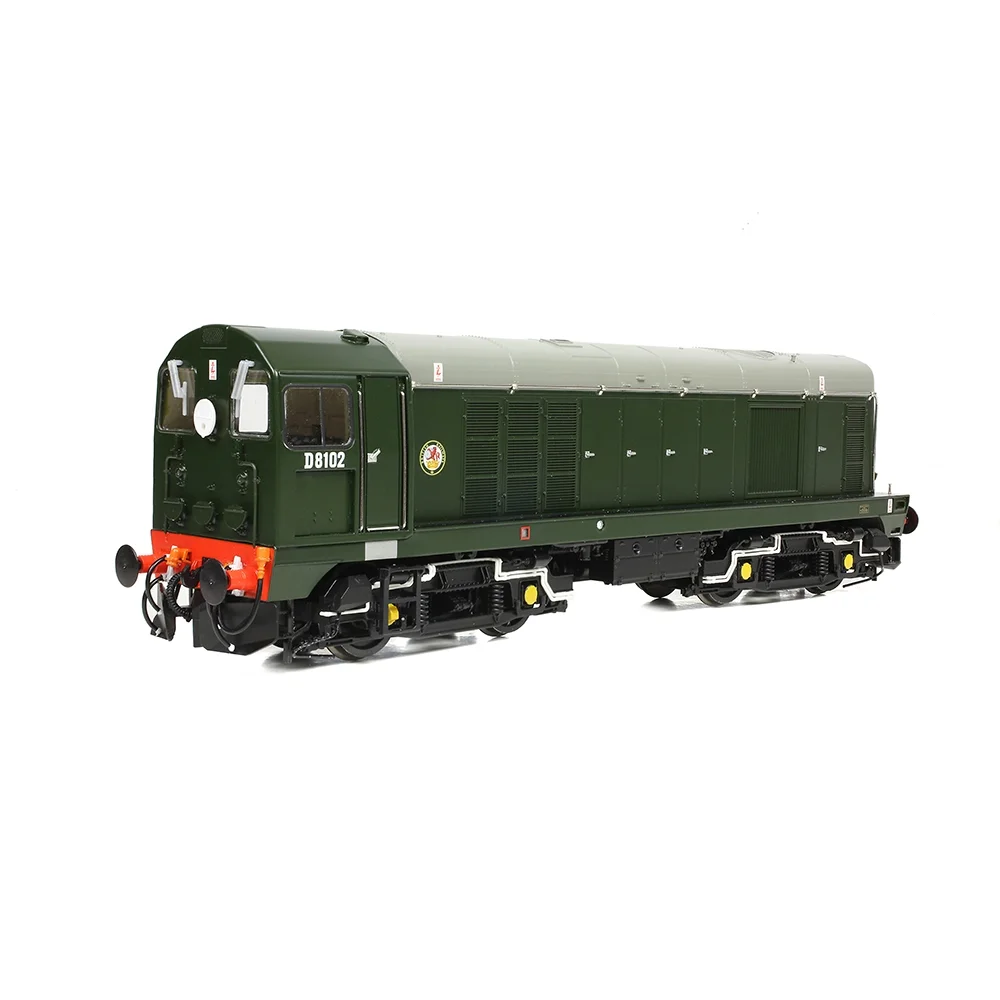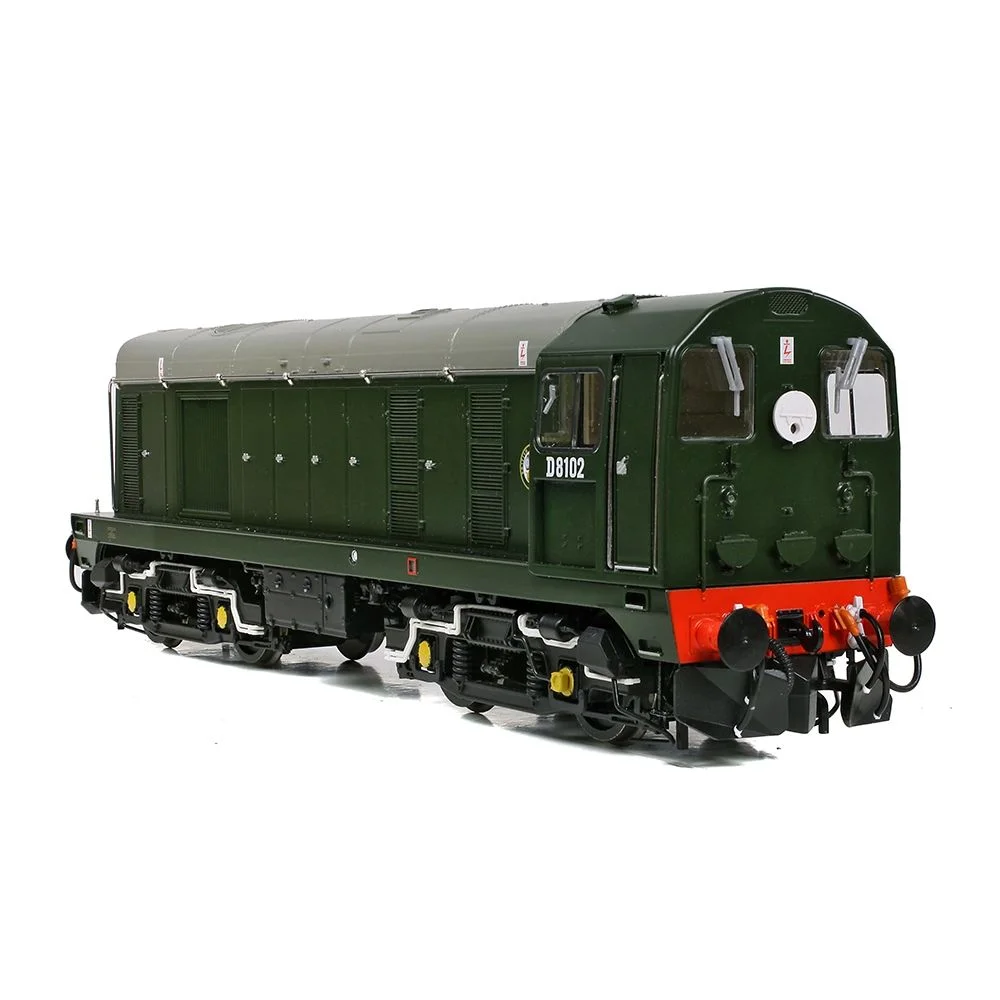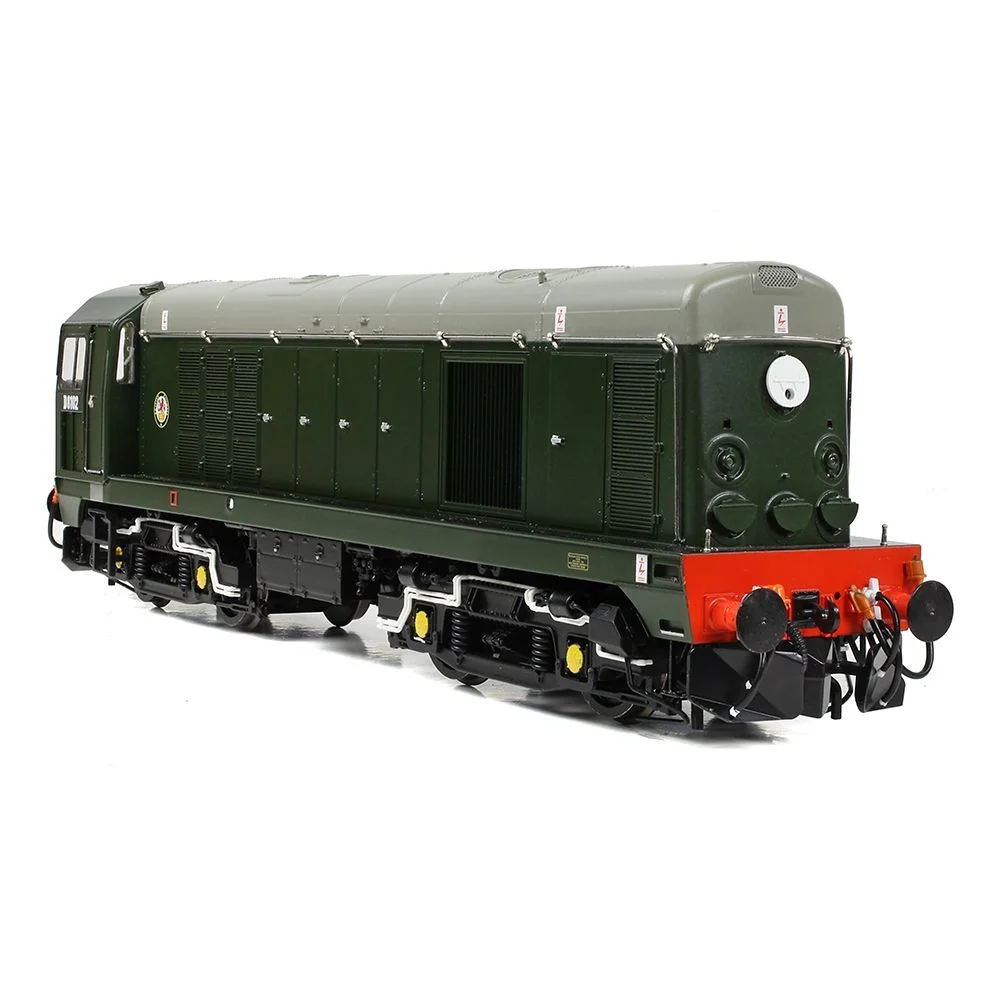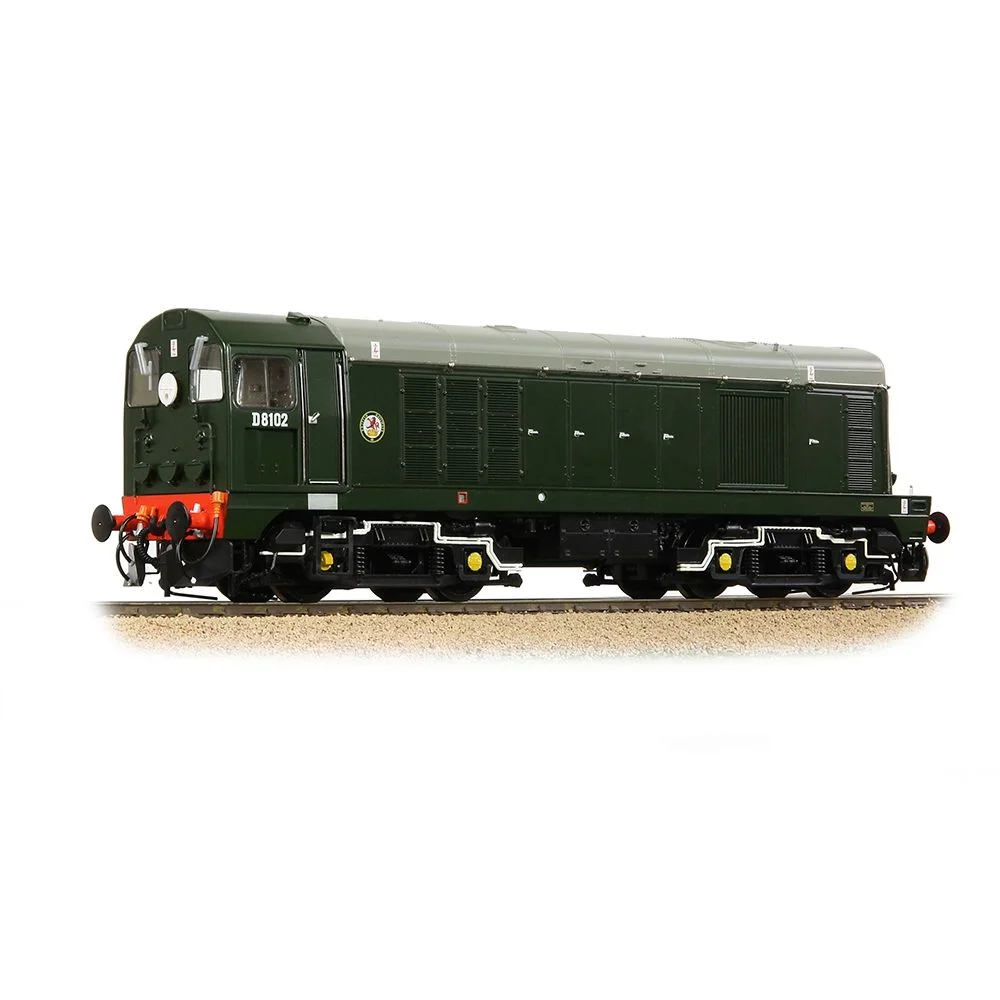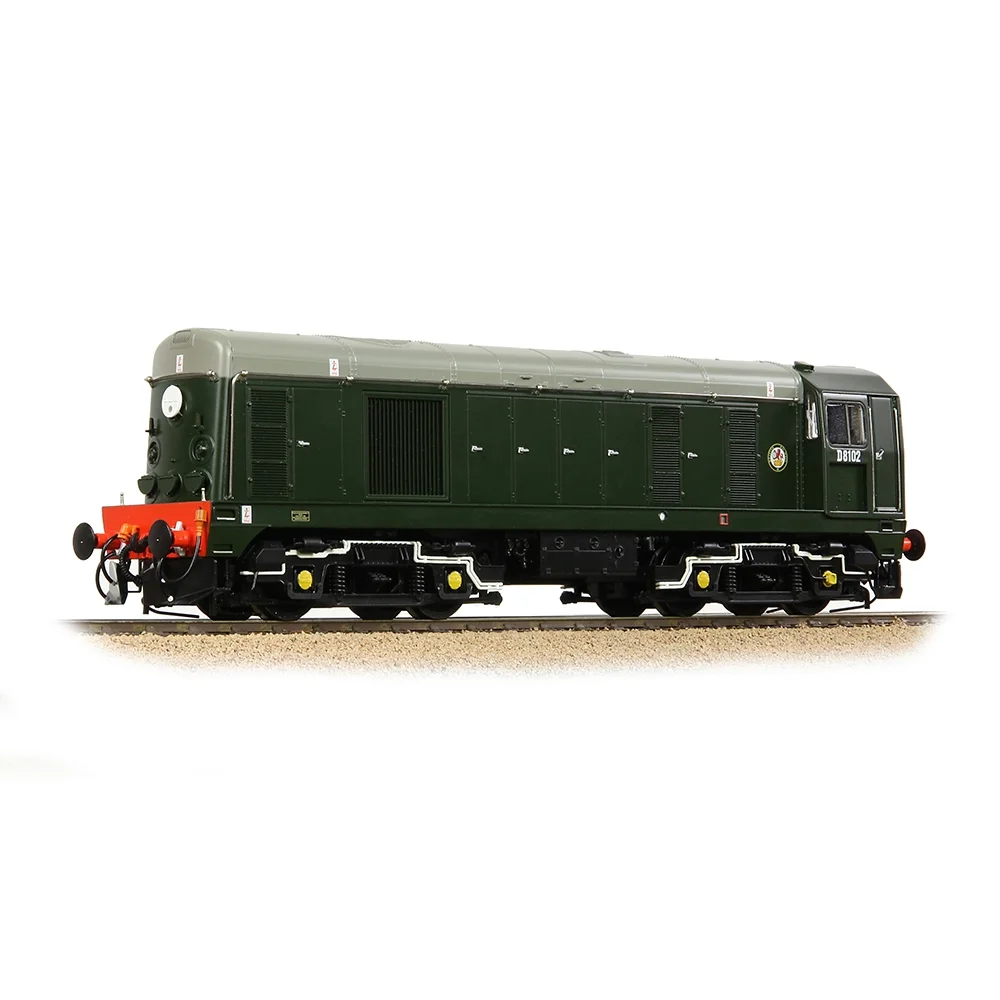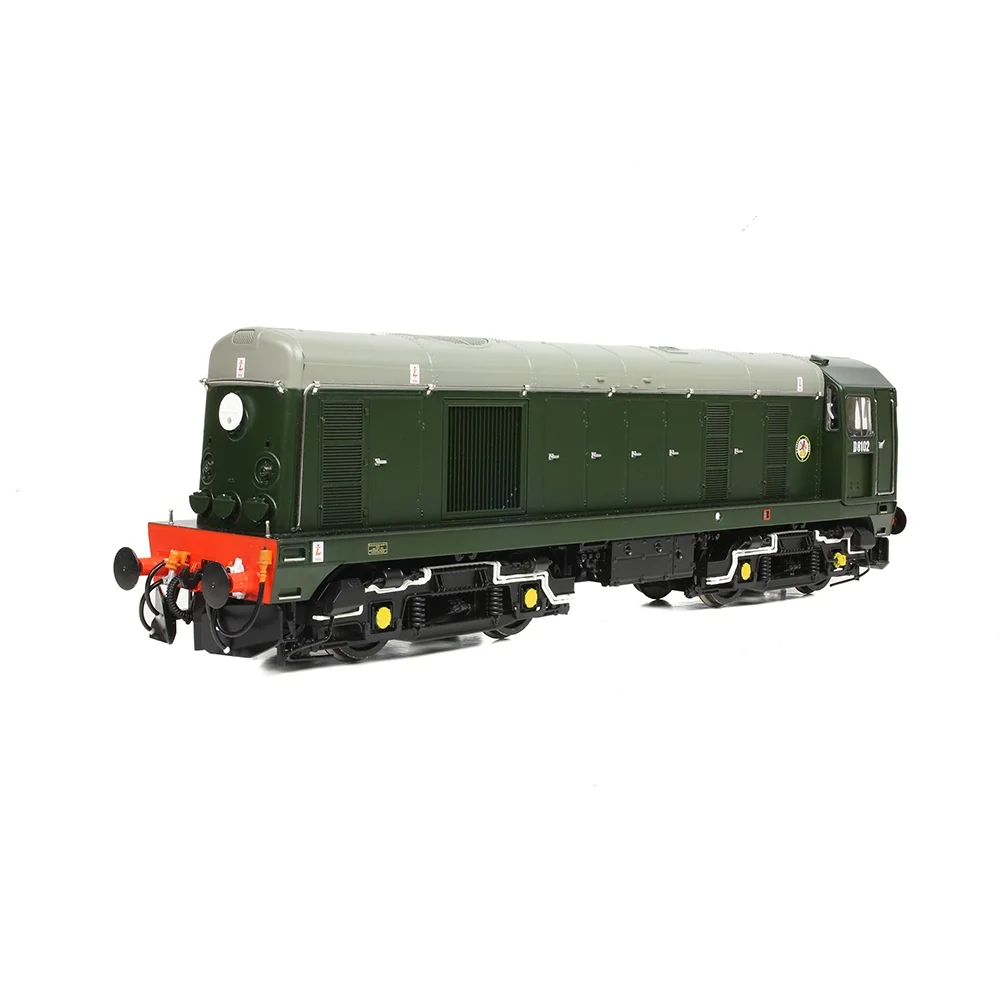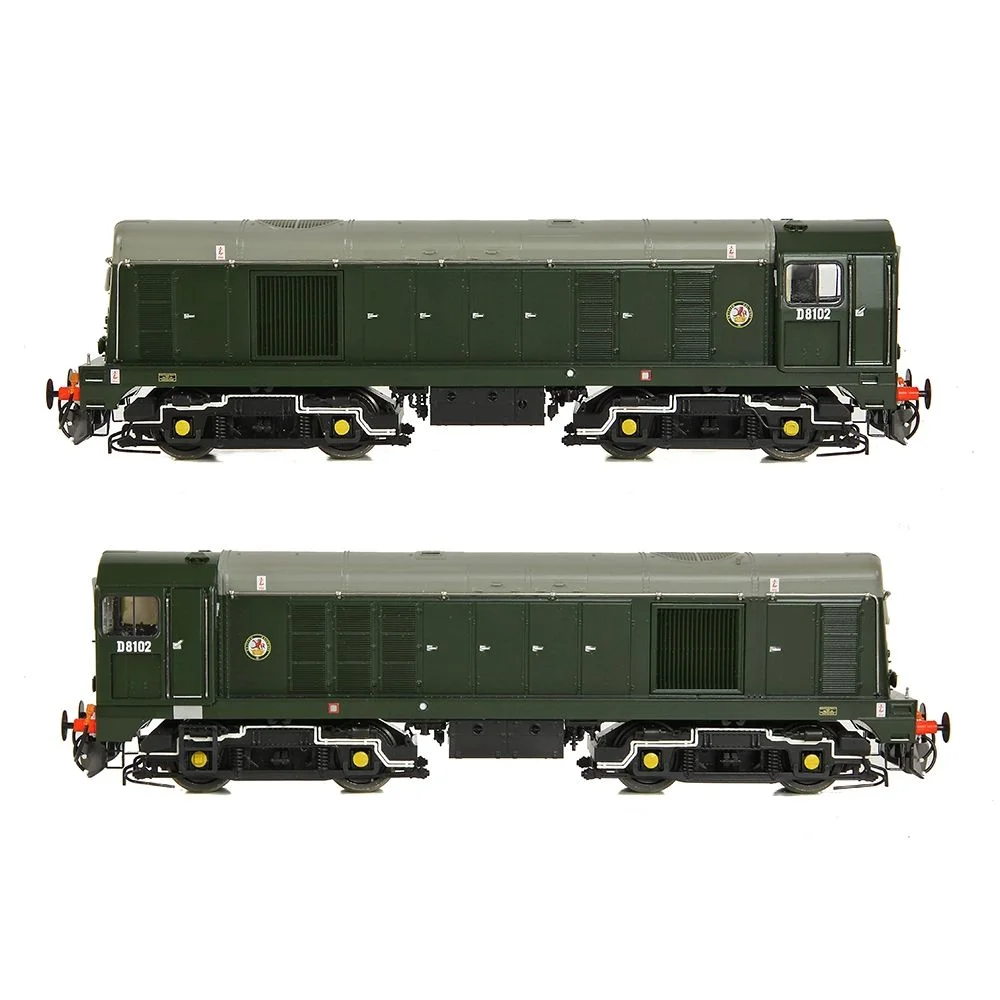Bachmann 35-352ASF
British Rail Class 20/0 D8102 British Railways Green
Tooling
In early 2021, Bachmann released a new Class 20 tooling aimed at representing the 20/3 variant. This update built upon the 2008 tooling, incorporating modern standards such as factory lighting and improved DCC integration while maintaining accurate body styling and finish.
Tooling Features
- Scale & Construction: OO gauge (1:76); plastic body shell over a diecast chassis.
- Detailing: Richly detailed etched grills, scale piping on bogies and bufferbeams, snowploughs included where appropriate, micro-style lamp irons, separately fitted handrails, and detailed cab interiors. Window wipers, battery boxes, sanders, footsteps, and finely moulded underframe eventuate realism and functional accuracy.
- Couplings: Tension-lock couplings in NEM pockets, with sprung buffers and accurate bogie equalising beams included.
Mechanical & Electrical
- Motor & Drive: Five-pole motor with flywheels, twin-shaft drive connecting to all axles, and comprehensive pick-up from each axle providing smooth and reliable running.
- Minimum Radius: Designed for a minimum Radius 2 curved track (~438 mm).
- Weighting: Diecast chassis provides ballast for strong traction.
- Lighting: Factory-fitted directional headlights at each end (warm/neutral LED), cab lighting available depending on variant.
- Assembly: Body attached to the chassis via screws, detailed extras supplied in accessory packs.
DCC Capability
This tooling marked a transition to a factory-fitted PluX22 decoder socket. The interface supports full feature decoders, including sound-ready decoders with space allocated for a small speaker or SugarCube-style speaker. Stay-alive capacitors can be easily fitted via the PluX interface for smooth digital running.
Liveries Produced
The 2021 tooling covers a wide variety of real-world schemes including:
- BR Green (Late Crest, Class 20/0)
- BR Blue (Headcode Box) and BR Blue with large logo
- Railfreight Grey (Red Stripe, Triple-Grey sectors)
- Direct Rail Services (plain, Compass blue)
- Harry Needle Railroad Company orange scheme
- London Transport maroon runs included as special runs
- Variants fitted as DCC ready or factory sound fitted
Reviews & Commentary
Model reviews highlighted the crisp new detailing such as etched grills, bogie and underframe added piping, and fully fitted lighting arrangements. Running tests praised the smooth low-speed performance, though minor cogging was occasionally mentioned. Sound-version models gained positive feedback for voice and engine realism, boosted by PluX22’s greater function control.
Media and Social Media
YouTube unboxings and review videos (e.g. Underground Eric, Sam’s Trains) showcased standout features: dual-end headlights, cab lighting, rich detailing, and the PluX22 interface. Enthusiasts praised the ease of decoder installation and speaker upgrades. Forum threads noted minor criticisms, such as bright LEDs on heritage liveries and missing headlamp surrounds in some variants.
Other Interesting Notes
- This tooling introduced the PluX22 socket as standard across Branchline diesels in anticipation of expanded lighting and sound functions.
- Factory-fitted cab lighting and speaker space were added in response to user demand for realistic operations.
- The tooling provided the baseline for later private-owner and special edition runs in 2022 and beyond.
Bachmann's Description & Specifications
MECHANISM:
- Five pole, twin shaft motor with two flywheels providing drive to both bogies
- All axle drive
- Electrical pickup from all wheels
- Separate metal bearings fitted to each axle
- Diecast metal chassis block and bogie towers
- Diecast metal gearboxes, with gearing arranged for prototypical running speeds and haulage capabilities
- 5mm (OO gauge) wheels to NEM310 & NEM311 standards with authentic profile and detailing
- Detachable coupling pockets to NEM362 standards fitted to each bogie
- Designed to operate on curves of second radius (438mm) or greater
DETAILING:
- Bogies constructed from multiple components featuring full relief detail
- Rotating radiator fan (un-motorised)
- Separately applied metal detail parts, including handrails, grab handles, sand pipes and etched fan grilles
- Sprung metal buffers
- Body-mounted snow ploughs supplied with each model
- Each model supplied with a full set of decorated, model-specific bufferbeam pipework and accessory parts
LIGHTING:
- Directional lighting, switchable on/off at either end on DCC or Analogue control
- Day/Night Mode, selectable on DCC or Analogue control
- Cab lighting, switchable on/off on DCC or Analogue control
- Authentic light colours and temperatures selected for each model based on era and application
DCC:
- Plux22 DCC decoder interface
SOUND:
- Speaker installed in all models for optimum sound reproduction
- Zimo MS450P22 DCC Sound Decoder fitted to SOUND FITTED versions
- Sound files produced specifically for the Bachmann Branchline Class 20 using recordings from real locomotives
- SOUND FITTED models operate on DCC and Analogue control as supplied. On Analogue, an authentic engine start up sequence and running sounds are produced when power is applied
LIVERY APPLICATION:
- Authentic liveries applied to all models
- Multiple paint applications employed on each model using BR and corporate specification colours
- Logos, numerals and text added as appropriate using multi-stage tampo printing using authentic typefaces, logos and colours
- In addition, where applicable Etched Nameplates and Plaques are also provided
Class & Prototype
- Class: British Rail Class 20/0
- Traction: Diesel
- Transmission: Electric
- Built: 1957-1968
- Total Built: -
- Running Number: D8102
The BR Class 20 (English Electric Type 1) served British railways from 1957-2025 as one of the most successful diesel designs ever built. With 228 locomotives constructed 1957-1968, these distinctive single-cab "hood units" became famous for their reliable English Electric 8SVT 1,000 hp engines, characteristic nose-to-nose paired operation, and beloved "Chopper" exhaust sound. They worked cross-London freights, Yorkshire coal trains, MGR operations, and modern nuclear flask services. Outstanding models available from Bachmann (OO), Graham Farish (N), and Heljan (O) in liveries from BR Green through DRS Blue.
Operator & Livery
- Operator: British Railways
- Livery: Green
- Era: 5 - British Railways Late Crest
British Railways transformed Britain's fragmented rail network into a unified national system following nationalisation on 1st January 1948. Created from the "Big Four" companies under the Transport Act 1947, BR operated most of Great Britain's railways until rebranding as British Rail in 1965, managing over 20,000 route miles and inheriting nearly 20,000 locomotives of diverse designs.
The organisation pioneered standardisation through its revolutionary BR Standard locomotive programme (1951-1960), producing 999 advanced steam engines under Robert Riddles' direction. These included the versatile Britannia Pacifics, mighty 9F freight engines, and mixed-traffic classes that incorporated the best features from all predecessor companies. The 1955 Modernisation Plan accelerated diesel and electric traction development, creating fascinating mixed-traction operations.
Notable achievements included establishing unified locomotive classification systems, introducing distinctive corporate liveries, and managing the complex transition from steam to modern traction. BR's six regional structure preserved operational diversity whilst enabling standardisation of practices, signalling, and rolling stock that had eluded private enterprise for over a century.
The BR era represents steam traction's final flowering alongside emerging diesel technology, creating unparalleled locomotive variety. Today, this heritage remains highly popular with railway enthusiasts through extensive preserved fleets, heritage railway operations, and comprehensive model ranges from manufacturers like Hornby, Bachmann, and Dapol, making BR subjects essential for authentic post-war British railway modelling across all scales.
